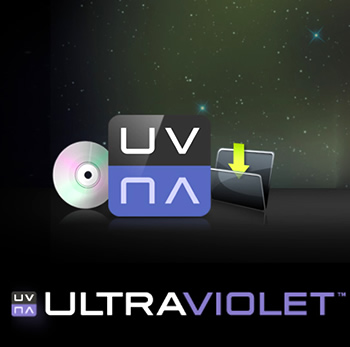As companies begin to embrace UltraViolet, a centralized meta-DRM strategy used for video content, Paramount appears to be the first to actually offer stand-alone UV movies for sale to consumers.
Paramount is offering about 5 dozen titles for download and while the selection is limited, it includes some memorable films – even if those memories aren't always good. Just to name a few, available flicks include the likes of Super 8, True Grit, Godfather and Ferris Beuller's Day Off.
The prices are likely to raise some eyebrows as many of these movies can be had for less in their physical format than their digital counterparts – $19.99 for HD and $12.99 for SD. Paramount also provides an option to rent the movies, but rentals are not provided in UV format. HD and SD rentals are $3.99 and $2.99, respectively.
Just recently, Warner Brothers also started making use of UV. Although the company doesn't provide a way to buy UV-based movies directly, retail customers who purchase physical DVDs with an identification code can punch that number into their UV accounts, giving them access to the digital version of the movie.
Apple and Disney are some of the last hold-outs against UV. It is thought that Apple may try to introduce and push its own UV-like standard. It is worth noting that Apple and Disney have close ties through Pixar.
Buy a movie once, watch it on any device you want as many times as you like for as long as you care to. That's the idea behind UV and for the most part, the standard delivers. However, Paramount's implementation of UV isn't exactly the idealized experience envisioned by the technology's developers.
For example, Paramount isn't supporting Android, WP7, Blackberry or game consoles. Not yet, anyway. iPhones are supported, but the video cannot be downloaded – only streamed – and even then only through mobile Safari and only in SD.
Ironically, Paramount has added quite a bit of "fine print" to a standard which intends to be ubiquitous and universal. Adoption is still in its early stages though, so hopefully as companies improve their methods, we'll start to see broader device and app support with fewer strings attached.
Although UV tries very hard to solve the non-interoperability issues that have plagued competing DRM formats, it is not perfect. You'll still need a UV-compatible player with ties to the Internet. Compatibility is often cited as the primary source of contention between companies and people who just want a pleasant experience.
With UV, proprietary DRM schemes are still employed, but the standard attempts to contain and insulate users from the often unpleasant idiosyncrasies of DRM. As a result, users only need to worry about one, single standard – UltraViolet.
As with any system that incorporates DRM though, there are always caveats when compared against pure, unadulterated media. However, this might mark the industry's best attempt thus far at maintaining a reasonable balance between usability and content protection.
If you'd like to learn more about UltraViolet, I suggest you check out this very informative FAQ.
